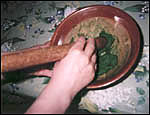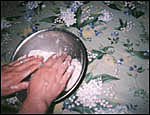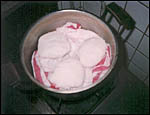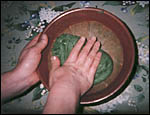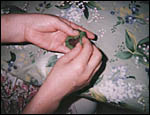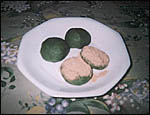When the grass and trees in the mountains and fields begin to sprout in the spring, many Japanese people enjoy walking in the mountains and picking wild plants. One of the most famous of these wild plants is yomogi (mugwort). Yomogi is of the chrysanthemum family, and it grows in all areas of Japan except for Hokkaido. It can be seen wherever the sun shines―the hills, fields, riverbanks, roadsides, and so on. Yomogi is a very hardy plant, and its leaves have jagged edges and white fuzz on their undersides. Besides chlorophyll and dietary fiber, it contains Vitamin A, B1, B2 and C, as well as minerals such as iron, calcium and phosphorus. Since the leaves contain cineole and other essential oils, they give off a fresh, spring-like fragrance. Uses of Yomogi Yomogi is a vital ingredient of kusamochi (rice cake with mugwort) and hishimochi (lozenge rice cake) which is served at the Doll's Festival in March. In addition, the fuzz on the underside of the leaves is gathered and used in moxibustion. In some regions, there is an ancient custom of hanging yomogi and iris leaves together outside homes in order to keep evil spirits away. It is said that evil spirits dislike their smell. Its juice is effective at stopping bleeding, lowering fevers and purging the stomach of impurities. It can also be boiled and taken to relieve colds and coughs. Our mothers and grandmothers in the countryside often make kusamochi for us. It is quite simple to prepare after going to the riverbank to pick yomogi leaves. Recipe for Kusamochi (Rice Cake with Yomogi) Serves four (about eight pieces) Ingredients Yomogi leaves 100 g Baking soda a pinch Rice powder 200 g Boiling water 160-180 g Red bean paste 200 g Soybean flour to taste Sugar a pinch 1. Wash the yomogi leaves, and put them with the baking soda in a pot of boiling water. Boil for one or two minutes. |
